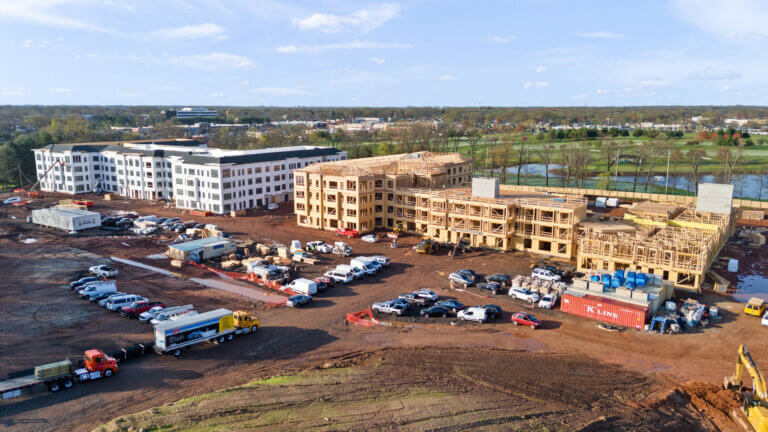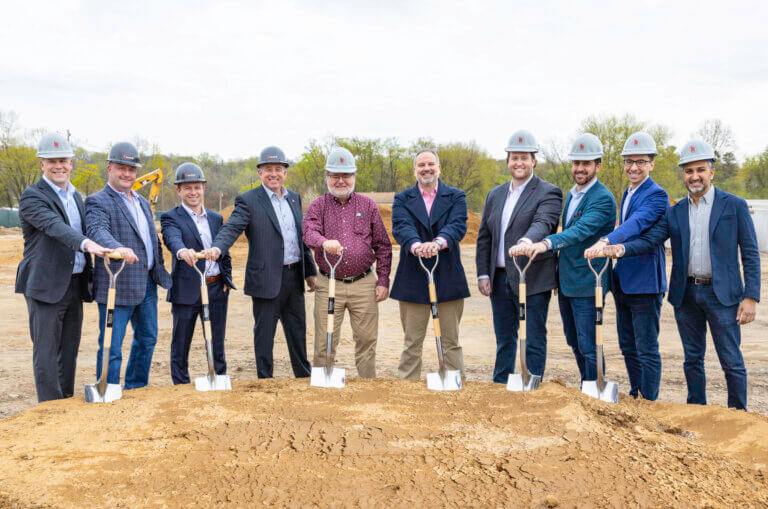Coastal projects are some of the most challenging construction projects to work on. The coastal ocean frontage experiences very harsh conditions, among them severe erosion, violent weather, and fluctuating tides.
This does not mean that coastal areas are completely doomed. They can still be given a chance to thrive and house the most beautiful pieces of architecture across the world. This can be achieved through the application of restorative and creative solutions that give the properties the ability to withstand harsh external conditions and the elegance of the coast.
MagnumStone, for instance, is one of the retaining wall companies that is creating revolutionary solutions for coastal regions. This is how retaining walls are used to create successful solutions in coastal projects.

Tall Retaining Wall Systems
Tall walls are a common feature in coastal retaining wall projects. The hollow core block system provides engineering design flexibility that facilitates the creation of tall walls that separate buildings from the coastal ocean frontage and provides an allowance for features such as parking lots.
MGM National Harbor had its retaining wall project completed in 2016. The special provisions that came with this solution include the use of MagnumStone extender system that allowed the wall to rise 24 ft (ca. 7 m). tall, the embedment inclusive. Imagine attaining this height for your retaining wall while only requiring a depth of just about 10 ft (ca. 3 m).
The extender system slides into the back-side of the retaining wall unit, providing the designer of the wall with the flexibility to optimize the excavation space while creating a tall wall.
Additionally, the project’s engineer, Geo-Technology Associates, Inc., designed the retaining wall without a geogrid to avoid interfering with the structural integrity of the wall should any future excavations be made.
Eco-Friendly Gravity Retaining Walls
The coastal area is home to a bubble of plant and animal life that forms a rich ecosystem. This geographic area should be protected and any construction projects in these areas must adhere to the environmental sustainability guidelines applicable in that region.
For that reason, MagnumStone retaining wall blocks are highly recommended. The hollow core system uses 40% less concrete compared to the traditional big block retaining wall. This makes the MagnumStone retaining wall systems sustainable by design, with several benefits to the environment.
Due to the lesser amount of concrete required to produce the retaining wall blocks, the carbon footprint of the manufacturing process is tremendously reduced. The resultant lightweight blocks mean that lesser trips are made to the coastal sites, thereby reducing the amount of carbon produced during transportation.
Once the blocks have arrived at the site, their installation requires less equipment and less labor, leading to additional savings and lesser energy consumption, which is good for the environment.
To compensate for the reduced weight of the retaining wall blocks, the innovative MagnumStone extender unit system is used to provide soil enforcement instead of additional concrete.
Major Challenges Facing Coastal Retaining Wall Projects
Poplar Island, located along the eastern seaboard in Maryland’s Chesapeake Bay had a major problem; quickly eroding landmass. There was a need to restore the landmass, fast. The restoration plan was actioned by the U.S. Army Corps of Engineers (USACE) and Maryland Department of Transportation Maryland Port Administration (MDOY MPA).
USACE specified a big block gravity wall system for the Poplar Island construction projects, dubbed Spillway 17 and Spillway 19. The project had major hiccups including soft underlying soils which would not effectively bear the weight of the heavy walls.
Additionally, the structures had to account for tidal water elevation fluctuations and global stability. These are major challenges that contractors and engineers have to overcome when working on coastal projects.
MagnumStone was the most viable solution for the problems faced during the Spillway 17 and Spillway 19 projects. Imagine the initially proposed blocks, crew, materials, and equipment for the Spillway 17 and Spillway 19 walls had to be shipped by barge to Poplar Island. But the lightweight MagnumStone hollow core blocks could be transported in fewer trips by flatbed trucks, reducing the carbon footprint of the transportation process.

The barge would load more square footage of the MagnumStone blocks. In addition, the construction phase of the project saw the installer company, McLean Contracting Co. use smaller equipment since moving the blocks did not require very large machinery. The construction process was, therefore, eco-friendly.
The project was implemented by the erection of four MagnumStone gravity retaining wall systems (Spillway 17 and Spillway 19 each having 2), with the peak of the wall being 14 ft. high, with an average water level of 5ft (1.52 m). 4 ft (1.22 m). MagnumStone extenders were attached to minimize the need for maintenance and repairs in the future.
Final Thoughts
The coastal frontage experiences harsh weather conditions, making any construction project complex. The engineers and contractors have to put into consideration the shifting tides and severe erosion. One will need retaining wall solutions that are both eco-friendly, durable, and of high quality to deal with the problems caused by coastal projects.
The precast MagnumStone retaining wall system has proven to have the strength to hold up better when hit by severe tides and can withstand salinity and saltwater applications over a considerably long period of time. Making it one of the best solutions for these kinds of projects.
March Construction has hands-on experience with coastal building projects.
March has been building complex commercial construction projects across the Northeast for 30+ years, including 270 Richards Street, a Booklyn warehouse coastal project which is located on the Red Hook Channel off the Atlantic Ocean.
Your coastal building project is not just another job for us. March Construction provides hands-on construction management services and our principals are closely involved with each project. We are experienced with fast-track work, prioritizing your critical schedule. March effectively manages the big picture as well as the fine details with projects considerable in size and complexity.
Reach out to us today about your commercial building project. We take on projects with a size/budget of $10MM and up.
You can chat with us in the blue chat bubble to the right immediately, send us a a message, or call our main office at (973)-904-0213 9AM-5pm Mon-Fri to consult with a March representative.





